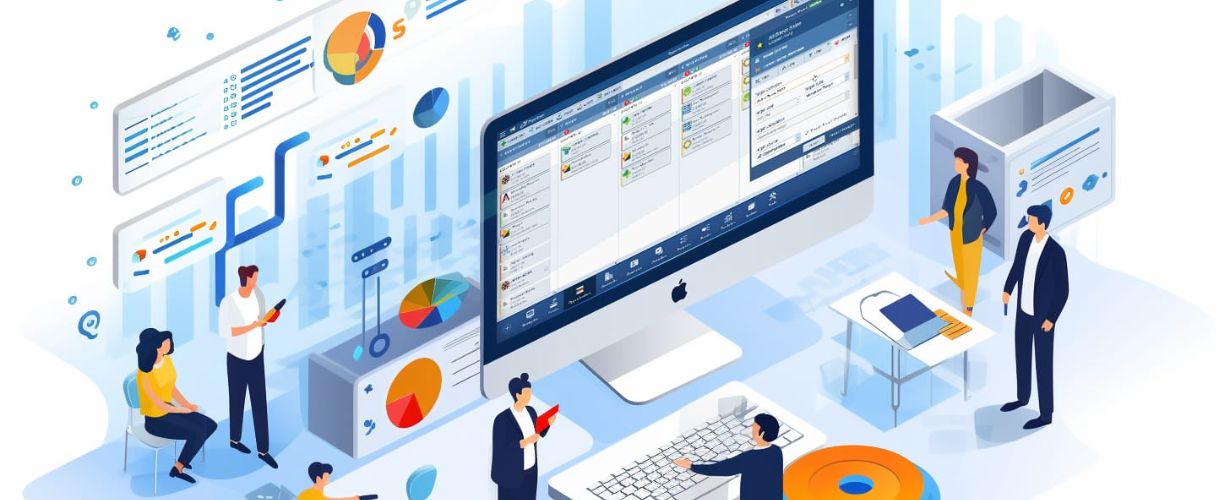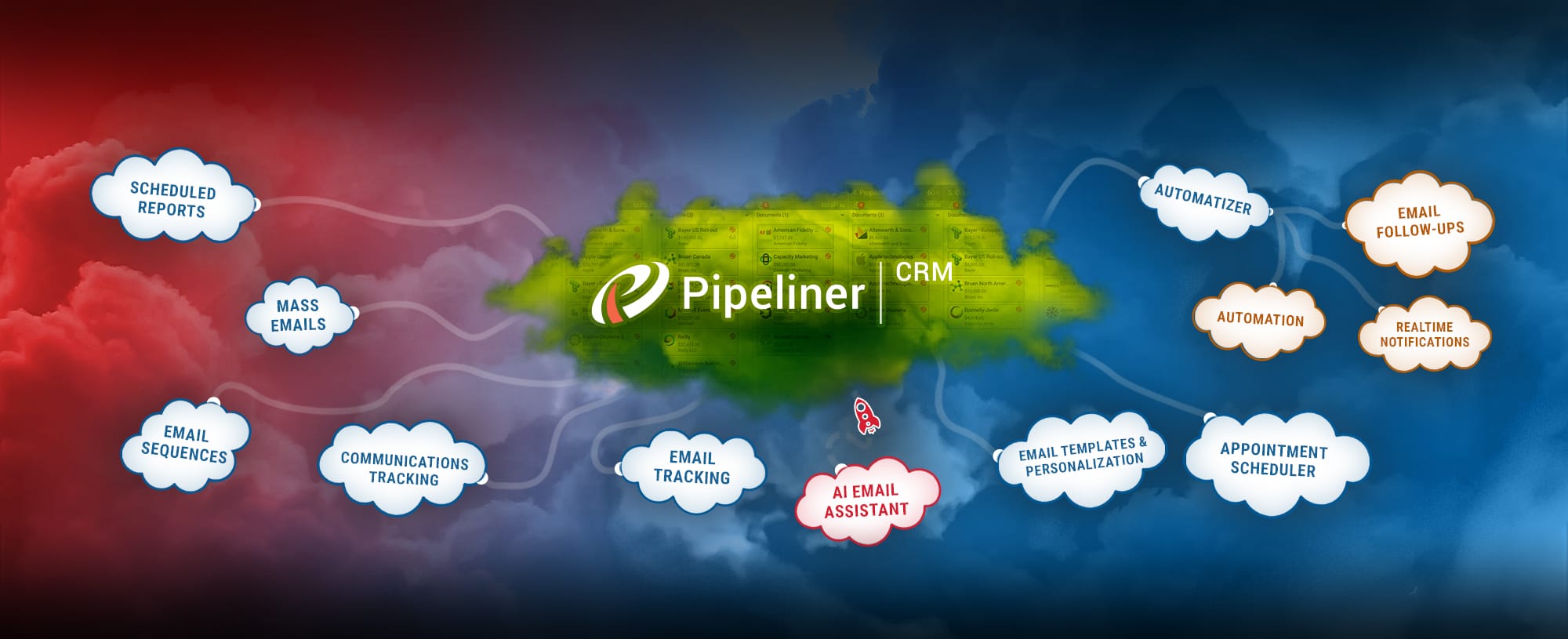Sales, and accountAccount Account refers to a record of primary and background information about an individual or corporate customer, including contact data, preferred services, and transactions with your company. management, both have two definite sides.
Peter Thiel wrote in his 2014 book Zero to One, “In the 1990s, the focus was on the productProduct Product refers to anything (an idea, item, service, process or information) that meets a need or a desire and is offered to a market, usually but not always at a price., and not on sales. If your product requires advertising or salespeople to sell it, it’s not good enough. Technology is primarily about product development, not distribution. Bubble-area* advertising was obviously wasteful. So the only sustainable growth is real viral growth.”
However, that information applied to the 1990s. Once the dot-com bubble had burst, it became evident that sales mattered just as much as the product. This is also true of account management. If we didn’t need sales or account management skills, people would simply buy products or services—which they obviously don’t. We have learned that these skills are just as important as the products or services themselves.
Austrian author and management consultant Peter Drucker provides us with what may be a more pertinent quote: “The purpose of business is to create and keep a customerCustomer Customer is an individual or an organization that purchases a product or signs up for a service offered by a business..” Yet to me, we’ve even come to a higher purpose today, which is to create repeat customers! This is a customer who not only purchases once, but multiple times, and assists us in expanding the account by selling to others within their organizationOrganization Organization is a cohesive group of people working together and formally bound by a shared identity (e.g., one team, company, club, etc.) and a common purpose (e.g., business growth, athletic victory, etc.)..
Let’s Take Away the Blind Spot
I’m discovering, as I dive deeper into account management in creating these articles, that within B2BB2B B2B is an acronym for Business-to-Business, a model for selling, relationship-building, or engagement. organizations the lack of account management is quite widespread.
It’s not discussed much, not even in books. It actually seems like a blind spot. In more complex B2B sales, the focus is constantly put on the leadLead Lead refers to a prospect or potential customer (who can be an individual or organization) that exhibits interest in your service or product; or any additional information about such entity. machine, on obtaining new customers. As you expand your existing customers, though, your lead flow is not as important because you’ve already got those leads.
I’ve been pointing out to our sales reps that these are hundreds of existing customers with whom we can immediately schedule meetings, in addition to scheduling meetings with new prospects. That doesn’t mean we’re opposed to gaining new customers—of course this is always important—but an equal amount of effort should also be placed on expanding these existing customers.
Expansion and Creating Value
Any company lacking a strong account management strategy—and within the B2B arena there seems to be quite a few—should realize that it is less costly selling to existing customers than obtaining and selling to new prospects. They should plan for that existing account.
For account expansion to truly take place, value must consistently be created in your product or service, specifically for that clientClient A client is an entity who pays another entity for products purchased or services rendered. Also called a customer.. In order to do that, you must research and keep yourself aware of your client’s issues. You then establish ways in which your product can continue to create value for the client.
We have, within our own company, a broad variety of powerful benefits that are continuously presented to our customers. For example, we might discover that a sales managerSales Manager Sales Manager is an executive who leads a sales unit, team or department by setting goals and meeting targets, formulating plans and policies, designating tasks, and developing salespeople. spends 2 hours every week preparing a report for their management board and the C-level of their company. Once the sales manager has spent these hours every week, they must come back the following week and do it all over again.
Our Automizer feature is one piece of value we could certainly provide to this sales manager. It would automate all the tasks this manager must perform for the creation of this report. Additionally, our powerful report scheduling features could be utilized to make sure that the report templateTemplate Template is a generic file with a framework showing the standard sections or features of a specific kind of document, used to create a new document of the same type faster and easier. is automatically created in the right format at the right time. That sales manager would then be not only far happier themselves, having saved considerable time better spent elsewhere, but they would also be receiving all kinds of pats on the back from their management.
That All-Important Relationship
I find it unfortunate that, in B2B SaaSSaaS SaaS is an acronym for Software as a Service., the role of providing the customer with additional value is given over to a non-sales role: the customer successCustomer Success Customer Success is a proactive mindset, function, department or strategy commonly adopted by B2B companies to optimize business with customers, reduce churn rate, drive profits and increase the predictability of recurring revenue. manager. I actually feel this is a totally wrong move.
The reason I believe this is incorrect is because the customer is removed from a salesperson to someone who is simply a product presenter. The customer’s relationship has mainly been built with the salesperson. It should be the salesperson who brings additional value to the customer, because this continues to strengthen the relationship. Relationships are not partial, split out between various roles—they are holistic. Relationships are also developed over time. They’re not developed with some time with this person, and then some time with another person.
You could look at the buyerBuyer A buyer is an individual or organizational entity that purchases a product or subscribes to a service.’s journey from their view. Take a look at a buyer’s journey from their perspective. In today’s sales environment, the buyer is introduced to the sales line by the sales development representative, the SDR. The SDR turns that buyer into a lead, and they set the appointment with the sales rep.
That means that by the time the buyer arrives at the sales rep, they’re already 2 people into the company. The salesperson, though, is the one who sells the product or service to the buyer. The initial pitch probably doesn’t make the sale, so it will take a few meetings. Finally the deal closes, and both the sales rep and the buyer are happy.
The buyer is then handed over to the service or onboardingOnboarding Onboarding is the process or act of introducing a new customer to your product or service; or integrating a newly hired employee into your workforce or team. team. That makes the 3rd person or group that the buyer must deal with.
And then…the buyer, lastly, is handed over to the customer success manager, which makes person #4 that the buyer must now deal with!
The Building of Trust
Let’s take an analogy from a different business type. Let’s say you have built up a bit of money, and you need someone to invest your money for you. You go to a private banker, who you will now trust to take care of your funds.
How would you feel if that banker, who has now earned trust from you, shunted you off on someone else? And then that person handed your over to yet another person? What would happen to that trust you had in the original person you dealt with? It is gone!
The point I’m making here is that trust can hardly be built between your organization and your customer if the customer is constantly being passed from person to person. In real life, we know that trust is built over time. Why do our children trust us? Because we nurture them for years, caring for them and demonstrating our love for them. (Of course when we don’t do this as parents, our children don’t trust us, which is a whole other story. But if we do our job well, they do.)
It is no different with a customer. The development of trust can only be done over time. Beyond being developed. over time, that trust must also be tested over time. Such testing doesn’t come in the good times—it comes through the bad times. When you bring the buyer successfully through the bad times, they trust you.
That test will never happen, however, when the buyer is passed from one to the next to the next. Just when the buyer might be beginning to trust someone, they get pushed off on someone else.
This operation also heavily impacts company-customer communication. Don’t you hate it when you call a company, and they’re constantly transferring you to another department? And you end up having to tell the same story to the 4th person that you told the 1st person? Your buyer doesn’t like it, either.
We’re looking directly how the B2B SaaS model, with its multiple roles, works. The net result in this environment is simply a frustrated customer. There is no account management being done—its only focus is on new accounts.
We find this viewpoint spilling over into the VC industry—when evaluating a company, they’re only looking at the cost of acquisition for a new customer, which is the standard SaaS metric. They don’t even take into account the cost of expanding existing customers—they don’t even have that as part of the model. Companies therefore never conceptually develop real account management and planning.
Account Management Through Pipeliner CRM
All this shows us why we find no inherent account management functionality within just about any CRM (some have it as a paid addition). Pipeliner, on the other hand, is greatly enhancing its existing account management features, and will be developing even more throughout this year.
One of Pipeliner’s unique features, to begin with, is being brought up to a level unheard of in CRM. Our Org Chart is a visual display, tailored by the salesperson, manager or other userUser User means a person who uses or consumes a product or a service, usually a digital device or an online service., that shows the hierarchy for a customer company. It allows the salesperson to stay on track as to who is important to gain the approval of, in that company, for any deal currently and going forward. The person or people creating the chart place details of customer company personnel, and arrange them to display company hierarchy. As you learn about the customer, new people can be added to it so that the chart always remains current.
We have added a great deal more functionality to this feature. To start with, we have added color-coding so that you visually show the strength of a relationship: weak, neutral, moderate or strong.
The nature of a person’s role as it relates to your relationship with them can now be visually shown—that person is either a champion for your product or service, a detractor, or a decision-maker. You can also visually show how each person on the chart influences other people on the chart.
The information displayed for each person in the Org Chart has been expanded. You can see their LinkedInLinkedIn LinkedIn is a social network for the business community. information. You can access the feeds for that customer, so you can see what kind of email or other communication has occurred with them, and can access specifics of that communication.
From this screen, you can dive down to the specifics of other information such as opportunities.
The new Pipeliner Org Chart could be termed a “political map.” From it, we discover who is important in a customer company, and who influences whom. We see where the account could be expanded, and where people could, if the account was well managed, help sell your product or service into other departments, branches, or the company headquarters.
Account management, because it is a vital part of sales, must therefore be a vital part of CRM.
———————————————-
*Bubble-area—this term refers to the enormous expansion of the dot-com bubble in the late 1990s. It was during this time the Nasdaq Composite stock market index grew by 400%.





